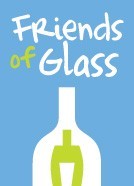ABOUT FLASKA
Flaska is a stylish, reusable glass water bottle with a difference. Not only is it good for your health (as it's made of glass) and the environment (as it's reusable), but it also saves you tons of money.
Meet Flaska - The Programmed Glass Water Bottle
Additionally, it features a technology called water structuring, a first in the Irish market! Its glass is programmed using the TPS process, which imprints a message inside the glass' silicon and is then transferred into the water by changing its vibrational structure*.
Water structuring with Flaska
The Flaska glass water bottle is available in two sizes (0.5L and 0.75L). Because it is made from glass, it has been protected by protective sleeves made from neoprene, silicone, cork or cotton. Due to high quality protective sleeves it can be used on the go as well as at home or in the office.
Speaking of home and office. We also offer a stunning 1L water jug Vodan, made from lead free crystal, which is sure to impress guests and business partners alike.
*based on findings and theories that are not recognised or addressed by official institutions.
A day in Flaska's life
Flaska – Born & Raised in an Alpine Paradise
Begunje na Gorenjskem – where natural beauty meets innovativeness
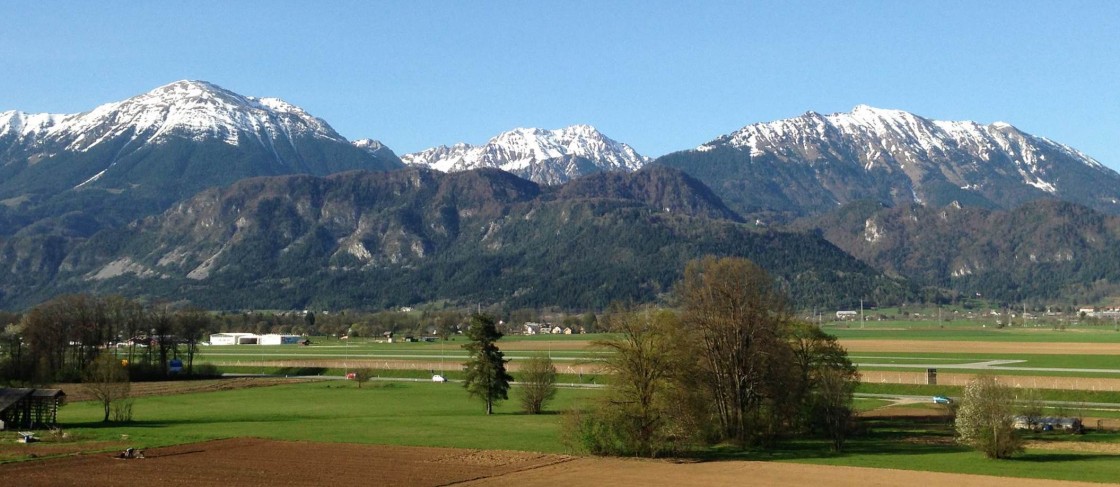
At the foot of a mountain range Karavanke in north-western part of Slovenia in the immediate proximity to a tourist pearl lake Bled lays a village with crisp clean water springs on every step. It sounds like a beginning of a fairy tale but it’s a fact.
Begunje na Gorenjskem are Flaska’s birth place. You can feel the positive energy in our company as well as while using Flaska every day. The story of Flaska’s beginnings is unique and interesting. In the Flaška company we live and work in tight connection with the wonderful environment we are a part of, of which we are well aware and we deeply respect.
The beauty of Begunje’s surroundings has inspired the internationally renowned folk group Avsenik. In their 40 Years of existence they composed over 1000 songs and sold more than 30 million records (31 golden, 2 diamond and 1 platinum). Thanks to the Avsenik band the village of Begunje is known as the cradle of folk music.

Company Elan has a long history in our village with beginnings in 1945. Elan brand is best known as the skiing equipment and sailing boat producer. They triggered a revolution in skiing with the invention of carving skis which were later on adopted by whole skiing industry. They received many international awards for their work, among them the »The most innovative brand 2012«.
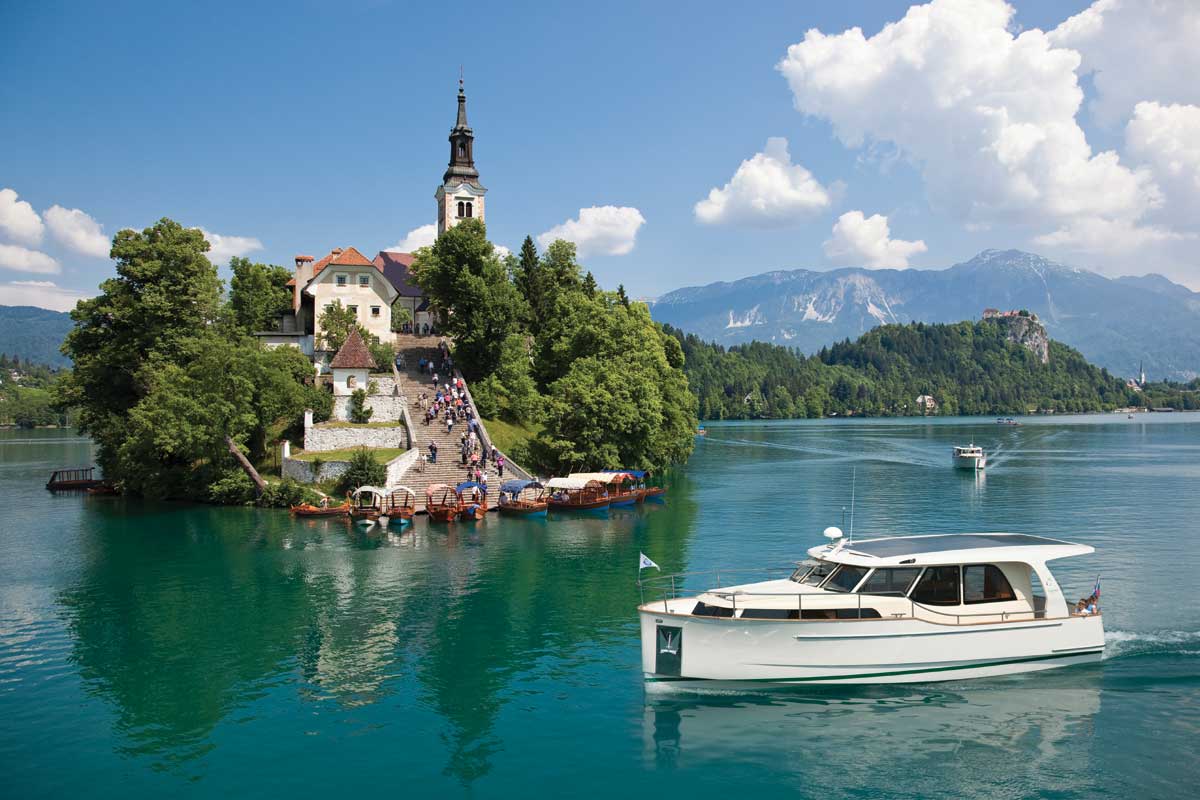
Seaway, the worldwide known boat designer, is also located in Begunje. Their most successful projects are hybrid boat Greenline 33 and carbon sailing boats Shipman.
It is quite interesting that such innovative and renowned products are being born on an area of a mere 1 sq. km. According to a feng shui master the area is blessed with good energy which doubtlessly has a positive influence on the locals.
Begunje na Gorenjskem are definitely worth paying a visit. You will be soaked with positive energy, have some delicious food and drink crystal clear water. Climb up the hill to the little St Peter’s church where one of the best views in Gorenjska region is available and visit the Kamen Castle or Avsenik gallery. You can spend the night in the new Lamberg Hotel, located only 300 m from our headquarters and leave full of unforgettable memories.
For Your Health
The quality and quantity of the water we drink have a direct influence on our health.
The quality and quantity of consumed water directly influence our health. After all, water is one of the key ‘ingredients’ of our body as it represents as much as 55–65% of body mass, and more than 80% of the mass of our brains. It plays an important role in body temperature regulation, it supplies cells with nutrients and oxygen via the blood, it flushes out waste. It is also present in the intestine and makes up the synovial and other body fluids while protecting the organs and connective tissues.
According to the latest EFSA recommendations, an adult female should consume two litres of water, and an adult male as much as two and a half litres, per day. Unfortunately, this is often not achieved due to being too preoccupied and which often results in chronic dehydration and an increased risk of disease.
Juices, tea, beer etc. cannot replace water. The body first has to break down these beverages in order to obtain useful water.
Glass is the most appropriate material for storing water (as well as other beverages, foods, cosmetics etc.) because it will not leach any toxic or unwanted substances. Under specific conditions, various types of plastic will leach substances such as antimony or bisphenols into the water.
Make drinking water a habit. Always bring your bottle with you and remember to drink water at regular intervals. A little effort will go a long way for your health. Flaska is made from robust glass and is covered by a protective sleeve which protects it from impacts. This is why Flaska will accompany you on the go!
Regular consumption of water
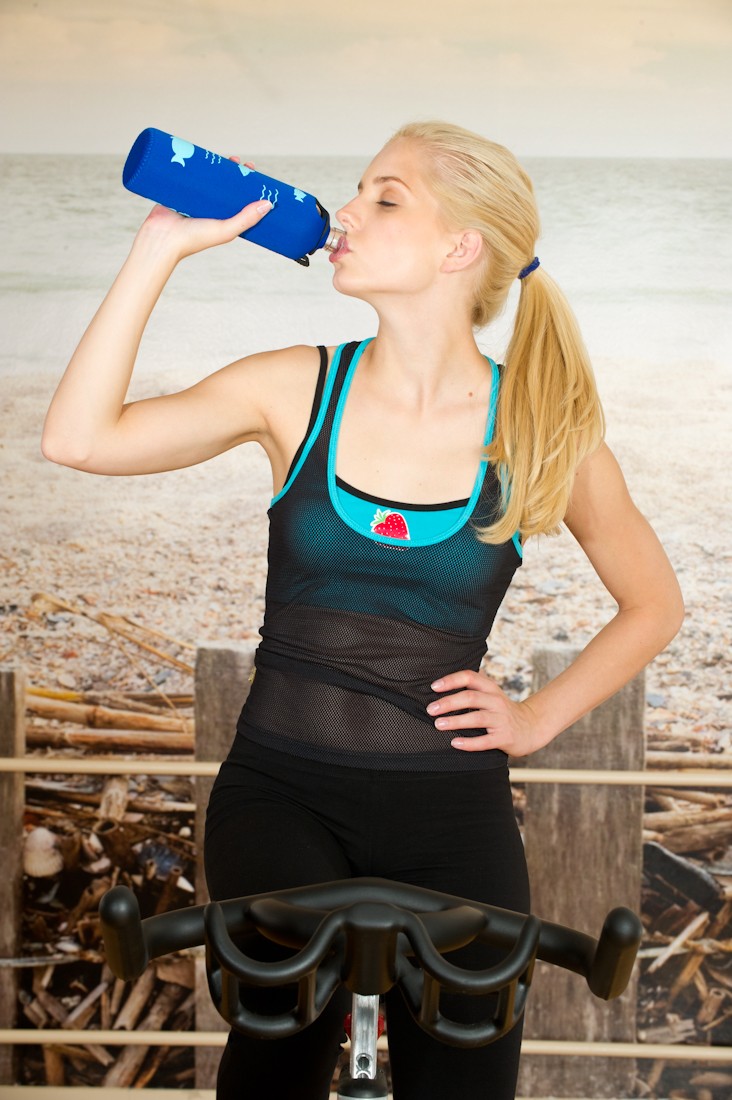
The sufficient consumption of water will undoubtedly positively influence at least six health issues:
- Drinking water helps maintain the balance of body fluids - Water constitutes the majority of our body mass and sustains numerous vital functions. The brain signals to the kidneys, according to the content of water in the body, how much water to excrete and how much to store. When the ‘level’ of body fluids becomes low, thirst kicks in. That is the last reminder that water levels should be replenished. Alcohol interferes with the communication between the brain and the kidneys and is responsible for the excessive elimination of water, which leads to dehydration.
- Water assists in controlling the intake of calories - Even though water does not mystically influence body weight, it does assist especially in the sense of substituting for calories which would otherwise be consumed through other beverages. Water in combination with foods which also contain lots of water helps to substantially restrict your daily intake of calories. Namely, the volume of foods with a high water content is usually larger (psychological effect) and the foods themselves usually require more chewing and are absorbed more slowly, which is why they make you feel full more quickly. Such foods include fruit, vegetables, soups and stews, porridge etc.
- Water energises the muscles - Cells contract when not supplied with plenty of water. This leads to muscle fatigue and diminished physical abilities. The American College of Sports Medicine has published water consumption guidelines, which recommend that, even two hours before engaging in an activity, a litre of water should be drunk, and drinking water should be continued in regular intervals during as well as after the activity.
- Water will make your skin look healthier - The skin contains plenty of water which acts as a barrier that prevents the excessive loss of fluids. When dehydrated, the skin is dry and wrinkled, though when hydrated sufficiently, your skin will be shiny and tight. What moisturisers do is to retain water in the skin, improving its appearance. Unfortunately, however, water will not make lines and wrinkles disappear. :)
- Water benefits the kidneys - Body fluids transport matter to and from the cells. Among others, they are responsible for flushing various toxins which are usually dissolved in water and are excreted via the kidneys in the form of urine. Insufficient body water levels will make this process considerably more difficult. When plenty of water is consumed, the urine will be light-coloured and nearly odourless. However, in case of insufficient water intake, it will be concentrated, darker and more pungent. Chronically dehydrated individuals are also more exposed to the occurrence of kidney stones.
- Water makes your digestion work smoothly - Sufficient hydration helps in the proper functioning of your digestion. When not enough water is consumed, it is extracted from the faeces by the large intestine, which will lead to constipation. Sufficient quantities of water and fibre are the perfect combination – water transports the fibre through the intestine creating a sweeping effect.
Source: https://www.webmd.com/diet/features/6-reasons-to-drink-water?page=2
Water for better learning results

Water is essential for the maintenance of our health. It plays an important role in levelling the body temperature, it delivers nourishment and oxygen to the cells, flushes away the 'useless stuff', and protects the organs as well as the tissues. Water is a part of practically all physical processes in our bodies. What about our mental health? What role does water play in our brains’ functions and consequently our mental processes? Does it have an influence on schoolchildren’s success?
Synapse‘’Water is essential for a healthy brain,’’ writes Dr Philippa Norman in her article about healthy brains[1]. ‘’Place two fists together, with your inner wrists touching. Your brain is about this size and shape. In contrast to the rubbery pink models we have seen, the brain is amazingly soft, composed primarily of fat and water. It is greyish and pudding-like – composed of 100 billion brain cells – called neurons, that drive our thinking, learning, feeling and states of being. Neurons need good fats, protein, complex carbohydrates, micronutrients – vitamins, minerals and phytonutrients – and water. These nutrients are used to drive the learning functions of the neurons.’’
Mental processes are actually chemical processes in our brain. Our every action, thought, spoken word (so everything we do) is triggered by different chemical compounds (neurotransmitters) which carry information to certain neurons. For a fast and quality transmission of neurotransmitters among the neurons through synapses, the membrane’s muscle tone is a crucial element. This is where water steps in because sufficient hydration is the most important condition for muscle tone maintenance. We can say that quality food (for the creation of neurotransmitters) and water (for their transport) are crucial for good and efficient mental processes.
Researches have shown that we have already lost 2% of water in our body when we feel thirsty, and cognitive efficiency is lower by 10%! Next to its direct effect, dehydration also has indirect effects – a dehydrated person is tired, unfocused and demotivated. Just think about your efficiency on a hot summer day. This condition additionally lowers the efficiency of our mental processes. This article from the Telegraph webpage writes about similar results: ‘’Researchers at the Institute of Psychiatry in London and the MRC Cognition and Brain Sciences Unit in Cambridge[2], have found that teenagers' brains work less efficiently when they become dehydrated, making tasks such as problem solving far harder. The researchers carried out brain scans on ten teenagers who were asked to perform 90 minutes of exercise to induce moderate dehydration before being given a series of problem solving and reaction time tests. Although the children lost just 1.1% of their body weight through dehydration during the tasks, the study showed that their brains had to work harder to carry out the same task when dehydrated. The children's ability to perform the tasks did not change, but functional Magnetic Resonance Imaging scans revealed increased neural effort in key parts of their brains such as the middle frontal gyrus and the inferior parietal lobule – key areas in problem solving and learning.’’
[1] www.healthybrainforlife.com/articles/school-health-and-nutrition/feeding...
[2] www.telegraph.co.uk/journalists/richard-gray/7728442/Dehydration-makes-y...
[3] www.sabinasilc.com/viva26.pdf[3]
The reusable glass water bottle Flaska
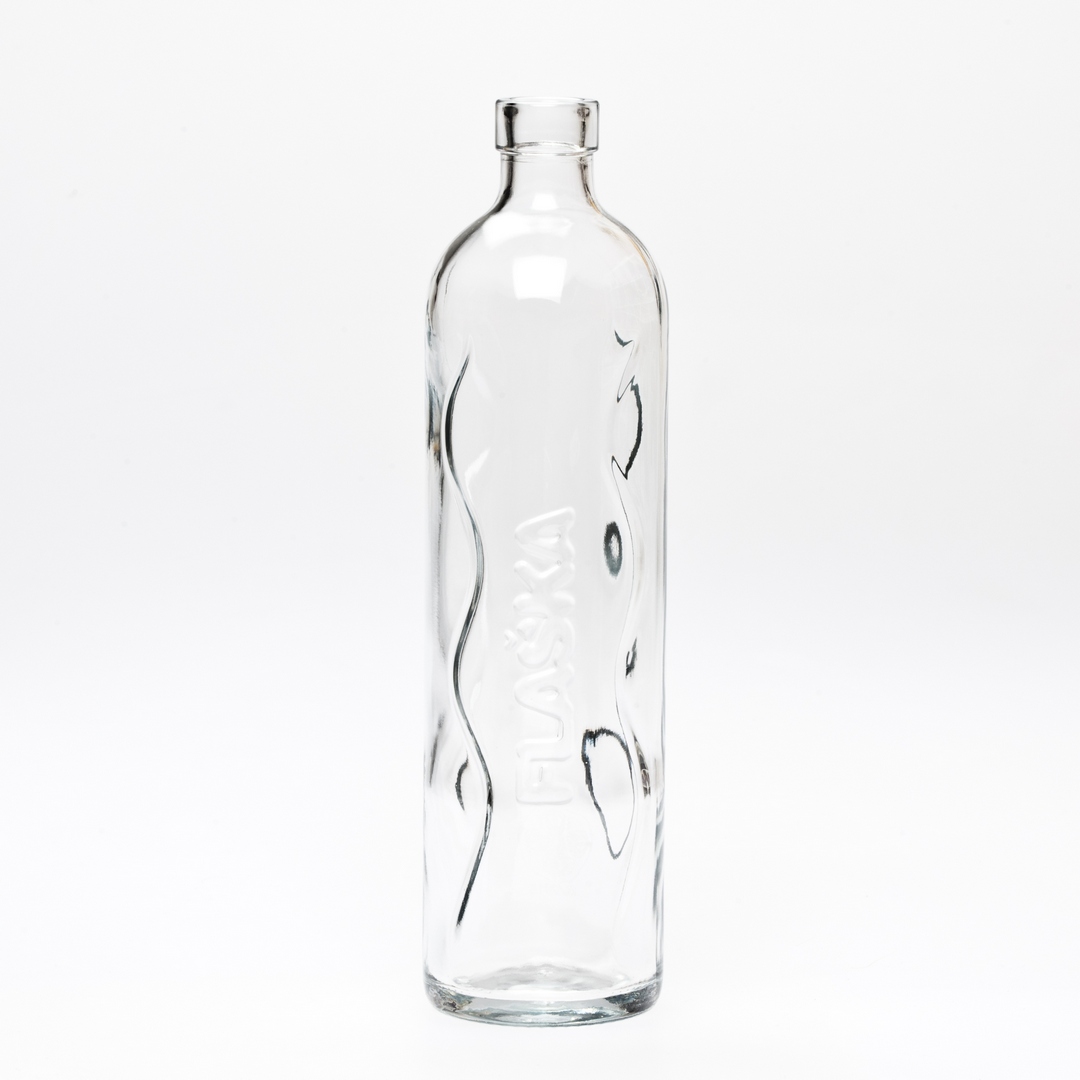
Glass is slowly making its way back into our daily lives. Once again, we have become aware of its advantages for health and the environment. Glass won’t leach any harmful substances or smells or aromas into our beverages or food. This is why quality cosmetics, wine, oil, food supplements and medication containers are usually glass. From the sustainability point of view, glass is the soundest choice due to its high recycling rate, as it is reused to manufacture products of equal quality.
The Flaska water bottle is made from robust glass, which is highly resistant to drops and knocks and will live through the majority of everyday accidents.
Flaska bottles are made in a glass factory in Florence, Italy. The attractive Italian design has been further enhanced by high breaking resistance. This will ensure you will actively use Flaska for a long time to come. The protective sleeves produced from various materials will ensure your bottle withstands the everyday accidents, thus making it your companion everywhere you go.
We found glass to be the most logical material for water bottles – it doesn’t put your health at risk, helps protect the environment and enables you to live an active lifestyle. That is why Flaska is made from glass!
Flaska - A Friend of Glass
Flaska is a member of the Friends of Glass organisation
Glass has nothing to hide. Glass packaging contains nothing that can damage your health. We love glass. Because it’s good for you, your family and the environment.
Flaska bottle became the official partner of the organisation Friends of Glass (a European Consumer Forum gathering people who prefer glass as packaging solution for their favorite food and drinks), initiated by European Container Glass Federation (FEVE) and now supported by many other partners.
Friends of Glass promote glass as the best material for food and beverage containers from the health, environmental and aesthetical point of view.
5 Reasons to choose glass:
Glass is the clear choice: For you, for your family and for the environment.
Here are 5 good reasons why...
- Glass respects nature and you
- Glass has class
- Glass recycles your way of thinking
- Glass says cheers to your health
- Glass has 5000 years of experience
Our partnership in this programme is in a way logical since Flaska has been faithful to glass from its beginnings. And since the first day on we have also been promoting glass as the best material for storing beverages and food. ... and of course water. Glass is the first and the biggest advantage of the Flaska bottles! We’re proud to be members of Friends of Glass!
Reusable glass water bottle Flaska
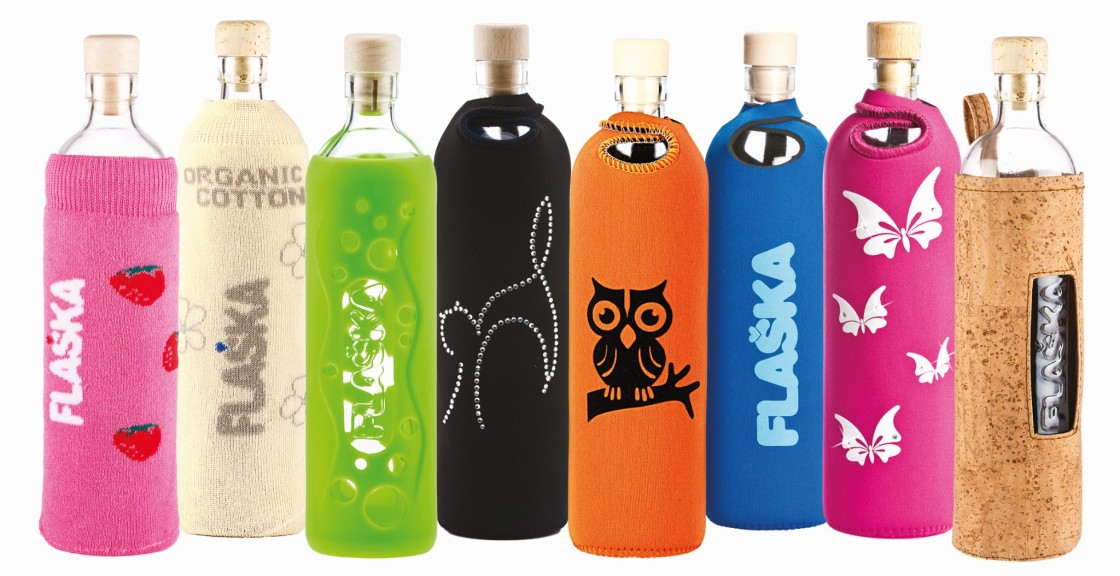
Some facts and benefits about Flaska:
- Made from glass
- Programmed glass for structured water
- Protective sleeve protects Flaska from breaking and helps to keep the water cool
- Protective sleeves made from various materials
- Various models and designs - at this point of time 33 models
- 2 sizes of Flaska bottles (0.5 and 0,75L) and the Vodan jug with the volume of 1 litre
- No leakage
- If you lose or damage the cap, you get a new one for free
- Name printing or engraving
- Possible to print logos & special designs
- Health & environmentally friendly
- Made in Slovenia, EU
Flaska is resistant to falls, bumps and knocks
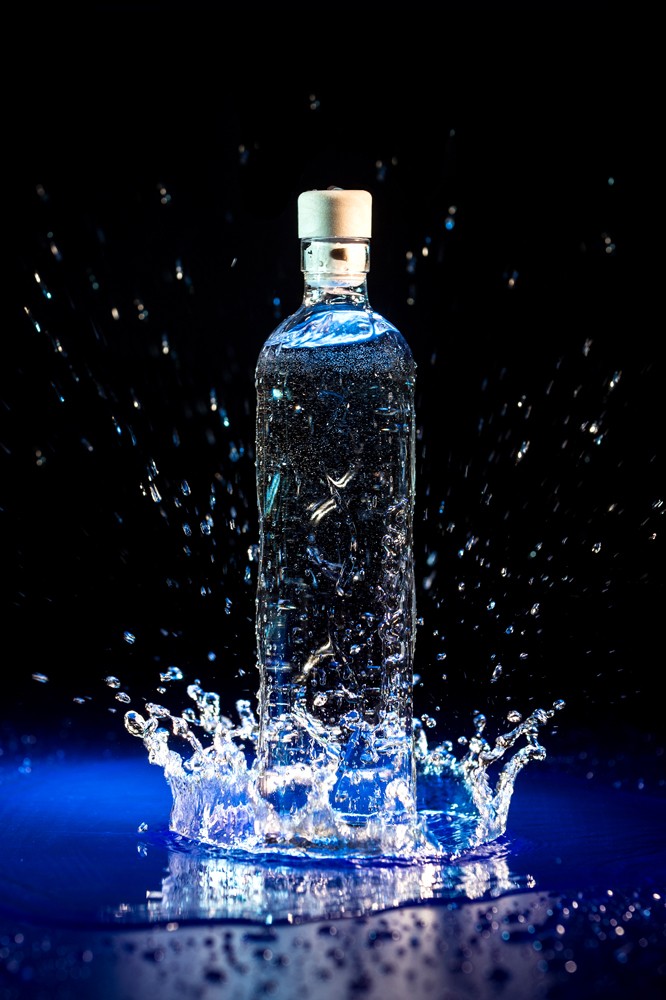
Flaska glass water bottle is a highly resistant reusable water bottle. It easily survives most of its daily challenges!
The bottle is the core of Flaska. We have consciously decided to use a material which provides numerous benefits to health and the environment in comparison to other materials – glass.
However, glass has a downside – in case of drops or knocks, it may become damaged or even break. But because an active life style demands an impact-resistant bottle, Flaska has been made from robust glass. This way, when combined with the protective sleeve, it will withstand virtually any everyday accident. For protection purposes, the neoprene sleeve is the most suitable as it provides the best protection in case of drops.
Flaska really is the bottle of choice for an active life style.
* Flaska is not indestructible. It will, however, survive nearly all everyday accidents.
For Our Environment
Let's drink tap water!
In areas where quality drinking water is available, buying bottled water is an unnecessary overloading of the environment. Water is most usually sold in plastic PET bottles. The relatively low recycling level of this material into materials of lesser quality (down-cycling) further substantiates this statement. We should consume quality and appropriately filtered tap water, wherever it is available, and contribute to minimising pollution.
Facts:
- In 2010, the average EU citizen consumed as much as 103.3 l of bottled water, the average Slovene 53.7 l and the average German national 166.2 l. The largest amount of bottled water in the EU was consumed by the Italians – 182.2 l. (www.voda.si/dokumenti/poraba2010.pdf)
- Flaska carbon footprint calculations have shown that the average Slovene may, if he or she decides to consume tap instead of bottled water, decrease water-related CO2e emissions by 95%.
- The average Slovene who drinks tap instead of bottled water will in a single year prevent the dumping of 42 litre-sized plastic bottles in landfills or similar, or will prevent the consumption of 10.5 litres of crude oil and 126 litres of water, which would be spent in plastic bottle production.
Plastic bottles
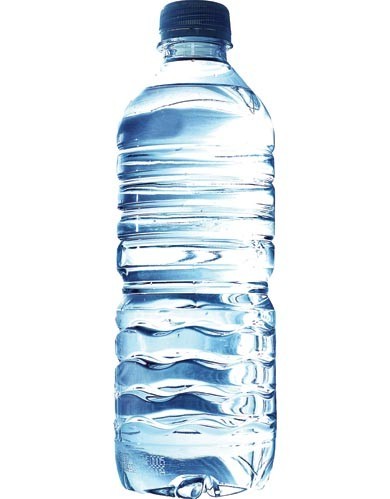
Bottled water is in most cases a useless product which people in many countries have laughed about until recently. Why pay for something you can get almost for free? Aggressive marketing campaigns have created a trend of drinking bottled water. Most of the smaller-sized (up to 1.5 litres) are made of PET plastics, which can be problematic from the health as well as the environmental point of view. Let’s take a look at the down sides (as well as the rare upsides) of plastic water bottles.
The Story of Bottled Water
DOWNSIDES OF BOTTLED WATER
HEALTH:
PET plastic (polyethylene terephthalate – the material that bottles are most often made of) leaches antimony which has been placed into the 2B group (meaning it can cause cancer) by the IARC (The International Agency for Research on Cancer) into the water. Research has shown that antimony leaches even stronger when bottles are exposed to high temperatures or/and when water is stored in PET for a longer period of time. Contrary to the claims in different popular media, PET does not leach BPA (bisphenol A).
ENVIRONMENT:
Plastic bottles have many direct and indirect negative consequences for the environment.
ENERGY CONSUMPTION:
Oil Energy consumption due to drinking bottled water occurs in many phases of its production. Oil is used as a base material and energy (usually produced by burning fossil fuels) is used for bottle manufacturing, processing and bottling water as well as transportation. Lots of burnt energy for the same result you get by just turning on the tap. When considering locally sold bottled water, bottle manufacture is the biggest source of energy consumption, but when water is transported to distant locations, transport ‘wins the prize’.
CARBON FOOTPRINT:
The size of the carbon footprint is actually the result of the energy spent on producing a unit of a product, in our case a plastic bottle. Plastic bottle’s footprint size is large, mainly due to the energy intensity of its manufacturing process and transport as well as the low efficiency of recycling plastics (in the EU only 21.3% of plastics gets recycled and 30% are burned for energy recovery[1]). The results from different analyses vary from 173 to 250g of CO2e per litre of water bottled in a plastic bottle, which is up to 6,000 times more than the footprint of a litre of tap water.
WASTE:
An average EU citizen buys 104 litres of bottled water per year[2]. Most of the bottles are made of plastic which theoretically means more than 50 billion 1 litre plastic bottles get sold in Europe per year. Taking into account data about the efficiency of recycling and energy recovery (burning) almost 25 billion plastic bottles get landfilled or even worse, thrown away into the natural environment, annually.
MONEY:
The prices of bottled and tap water vary throughout the EU and the rest of the world. But the differences between both categories are enormous everywhere. In Slovenia for instance, bottled water is 274 to 2.695 times more expensive than tap water[3], in USA bottled water is 2,270 times[4] more expensive. This is a unique case of price premium for the same product – a success that bottled water industry’s marketing departments are probably proud of.
SOCIETY:
bottled water consumption-per-capita-2009The bottled water industry is also often being accused of commercialisation and the privatisation of a common good, which water is supposed to be. Many individuals and organisations throughout the world demand the prohibition of water’s usage for the means of creating profit. Problems and conflicts have already taken place in some countries where water sources have been depleted or privatised. The documentary film “Tapped” discusses these problems.
Reduce waste
Drink tap water and reduce the amount of waste plastic bottles
Drinking bottled water is not only problematic for our health, but for the environment we live in as well. Two facts are especially ‘incriminating’ for the bottled water industry. The first one is the energy intensity of all the bottled water’s life cycle phases – extracting, filtering, bottling but especially bottle production, transporting and cooling the bottled water. The second one is the enormous quantity of waste, especially different plastic materials, caused by producing, selling, distributing and using bottled water. We have studied its energy intensity through our carbon footprint project. Aspects of waste generation are considered here.
An average EU citizen consumes 104 litres of bottled water per year. Most of the bottles are made of plastic which theoretically means more than 50 billion 1 litre plastic bottles get sold Europe wide per year. But there’s other packaging and extras used for bottled water transport and storage we shouldn’t forget about – cardboard, plastic wrap, stickers, declarations...
The Compelling Facts About Plastics 2009 report states that in the EU approximately 20% of plastic material gets recycled and 30% is used for energy recovery (meaning burned). This means app. 25 billion 1 litre plastic bottles get landfilled or even worse, thrown away in the natural environment, annually.
Since ¼ litre of oil and 3 litres of water are used to produce one 1 litre PET bottle, more than 6 billion litres of oil and 75 billion litres of water are used for the production of bottles which are eventually thrown away. As a comparison – app. 135 litres of oil is used to produce one tonne of glass, which means only 50ml per Flaska bottle.
*The calculation was made for 2010. The results may have changed since then.
BOTTLED WATER’S UPSIDES
CRISIS AREAS:
Bottled water is the only source of water in some areas, stricken by natural disasters or other types of crisis (wars, non-existent tap water...)
PLACES WITH POOR QUALITY TAP WATER:
There are of course areas where tap water doesn’t satisfy sanitary criteria. If there are no other (health and environment friendlier) solutions to this problem, bottled water might be the only choice. In their report, Freshwater in Europe[5], the UNEP states that more than 10% of EU residents drink potentially unsafe tap water.
CONVENIENCE:
Unfortunately, convenience is one of the main reasons people buy bottled water, although bottled water manufacturers would not admit it. We live in a dynamic society and an average person is extremely mobile on a typical day. Buying bottled water whenever we get thirsty is en easier solution for quenching our thirst because pouring tap water into reusable bottles requires some effort and planning. But awareness of all bottled water’s downsides should encourage us to overcome this ‘laziness’. ‘The return’ of drinking fountains and social movements which encourage drinking tap water could help as well.
We see that bottled water has some upsides as well. This is why our intention is not to oppose it generally but to reduce the unnecessary and excessive buying of bottled water. It should be carrying out its basic function, which is supplying water to areas and in situations when it is the only choice. We do however oppose the mass production and consumption of bottled water as the direct consequence of a manufactured demand, created by aggressive marketing.
SOLUTIONS
Reusable plastic bottles
Numerous drinking bottles are made of hard plastics. These do not leach antimony and are a better option than PET from an environmental as well as a financial point of view, because they encourage drinking tap water. However, it must still be emphasized that their manufacture is energy intense and recycling rates for plastic materials are relatively low. Recent scientific studies in the USA have shown that numerous types of bottles made of hard plastics leach bisphenol A (BPA), which ‘’has been shown to interfere with the reproductive development in animals, and has been linked to cardiovascular disease and diabetes in humans, among other things’’[6]. Since a lot of manufacturers have stopped using BPA, which of course had to be replaced by some other chemical. BPS is one of the solutions which might not be any better than the BPA[7].
Reusable bottles made of aluminium or steel
Although the metal industry is energy intense, we can say that reusable bottles made of metal are environmentally friendly. Aluminium especially has a very high recycling rate because of its price and physical characteristics. Theoretically it is possible to recycle aluminium infinitely. Since metal is sturdy it enables a long life for the bottles and in this way is environmentally and cost effective. Some of the lower quality metal containers are covered with a coating containing BPA (used as a protection from corrosion)[8]. Most of the better known producers have stopped using it after the already mentioned affair.
Glass bottles
A regular glass bottle can be a great substitute for plastic bottles. It is environmentally friendly since it enables regular drinking of tap water and it can theoretically be infinitely recycled[9]. It is an inert material which has only a minimal interaction with water. The biggest problem with using regular glass bottles is that they can break. They are relatively fragile and have no extra protection from knocks, so they are only appropriate for stationary usage and demand some caution when being handled.
Flaska bottles
The Flaska bottle is our solution for the medical, environmental, cost and social problems caused by bottled water. It is made of glass, which we have already identified as the most appropriate material for drinking water and can be recycled into products of the same quality and/or function. It encourages drinking tap water and can help its owners lower their environmental footprint (less waste, less energy used, less carbon emitted). The Flaska is equipped with a special sleeve which protects it from knocks as well as from the effects of sunlight and temperature on the water. It is made from robust glass so the possibility of breakage is even lower. Thus Flaska bottles are suitable for active people and can be used during sports activities as well. But of course we have to be aware that it is still made of glass and can break in extreme situations. Its colourful protective sleeve also plays the role of a psychological trigger and ‘reminds’ us of drinking water. Flaska bottle’s added value is the fact it is programmed and it structures the water.
Flaska's carbon footprint
The project
We are proud to be among the first companies in this part of Europe that have measured its product's carbon footprint. The project had two goals. One of them was to analyse (and use) any potentials to lower our greenhouse gas (GHG) emissions and other negative effects on the environment related to them as well as costs. The other goal was to compare emissions resulting from drinking tap water from Flaska with emissions caused by buying bottled water.
The carbon footprint project has been carried out by the company Ekogenca according to PAS 2050 standards. PAS 2050 demands the LCA or life cycle approach which means relevant emissions from every step in manufacturing, use and the disposal phase, have to be included. The carbon footprint was calculated for the Flaska Neo (neoprene sleeve) and the Flaska classic (cotton sleeve), also comparing different possibilities of shipping (home, shop). A four year period was chosen as the time frame, since we guarantee a 100% functioning of Flaska for this long. We have upgraded the basic footprint calculations with the future cutting emissions scenario, and the goals based on it. A comparison of GHG emissions of Flaska vs. bottled water was also conducted.
Results
Flaska Neo, bought in a shop, turned out to be the most efficient Flaska, considering the GHG emissions. The analysis also showed that an average resident of Slovenia (average usage of bottled water in Slovenia is 56L/person in a year) who gave up buying bottled water and started to drink tap water from Flaska, would lower his emissions of drinking water by at least 36.81kg CO2e or 95% in four years. The potential of lowering GHG emissions were also defined. The results were somewhat surprising because a relatively large share of the emissions is caused by local transport between different subcontractors.
Picture: Comparison of bottled water vs. Flaska emissions in four years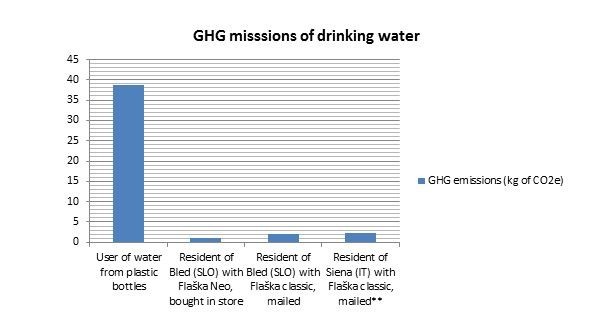
*Official data for bottled water in Slovenia (224L per person in four years) and Italy (756L per person in four years) have been used.
**Delivery data for Slovenia is used. The difference for shipping to Siena would be insignificant.
*The calculation was made for 2010. The results may have changed since then.
Savings
Save Money | Use A Reusable Water Bottle
By using a reusable water bottle like Flaska you will:
- Spend 274 times to up to 2,695 times less money for drinking water (compared to buying bottled water)*
Using a Flaska bottle is a rational decision as well, since it is known that bottled water is much more expensive than tap water. Numerous web sources provide basic assessments of the price differences. However, we do not want to guess. So we have used as benchmark values the data obtained through the small research of the water prices on the Slovenian market carried out by the reporters of the Finance newspaper. Even though the data date back to 2009, they nonetheless serve as reliable proof of the large and absurd price differences.
The prices of bottled water vary according to certain parameters. Such parameters include the brand, purchase location and packaging size.
The reporters calculated that the cheapest bottled water is almost 274 times more expensive than tap water; whereas, the most expensive bottled water is 2,695 times more expensive than the average tap water. It is necessary to take into consideration that cheaper bottled waters are typically filled with tap water. Therefore, an identical product is overcharged by at least 274 times!
In catering establishments, bottled water may reach even more astronomical prices, which can be seen from the table below.
|
1,000L of water |
Tap water |
Bottled water sold in shops |
Bottled water sold in catering establishments |
| The lowest price | 0,45€ | 300€ | 1.000€ |
| The highest price | 0,99€ | 590€ |
2.500€ |

